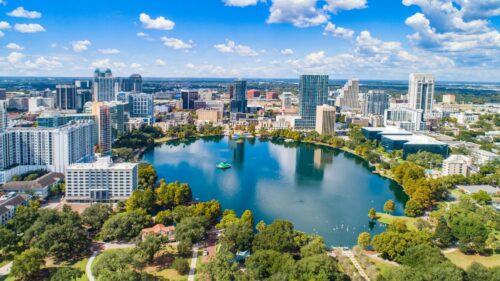
Report | 2022
Growing to Its Potential
The Value of Urban Nature for Communities, Investors, and the Climate
Global challenges are pushing cities to their breaking point. With cities expected to house 68 percent of the world’s population by 2050, warming twice as fast as the global average, and disproportionately affected by extreme weather, we need to use every tool at our disposal to ensure a low-carbon, livable, resilient, and equitable urban future. One frequently overlooked tool with great potential is urban nature — cities’ forests, parks, street trees, green stormwater infrastructure, and bodies of water.
Many benefits of nature are well known, like recreation, biodiversity, and carbon sequestration. But urban nature delivers countless additional benefits for cities including lower energy use and emissions, jobs, community connectedness, pollution mitigation, and heat mitigation. In economic terms, these benefits add up. This new report quantifies the overall value of nature’s benefits in cities and — for the first time — specifically quantifies urban nature’s potential to reduce energy consumption and emissions at the city level.
Our report finds that globally, the value of urban nature’s benefits is nine times the costs, delivering tremendous value for cities, communities, and investors.
The report shares novel quantified estimates of urban nature’s energy, carbon, and cost savings potential for buildings, stormwater management, and transportation in six cities around the world Abidjan, Côte d’Ivoire; Ahmedabad, India; Austin, Texas, USA; Curitiba, Brazil; Houston, Texas, USA; and Sacramento, California, USA. For example:
- Building-adjacent trees, overall city tree canopy, and green roofs can reduce building energy use and peak demand associated with mechanical cooling, saving Sacramento over $150 million in investment in new power generation.
- Distributed green stormwater features like rain gardens, grassy parks, and natural lakes could help avoid up to 87 percent of the embodied carbon of grey infrastructure, like large concrete basins and tanks, in cities like Ahmedabad, India.
- Street trees could reduce a city’s annual vehicle kilometers traveled equivalent to taking 4,200 cars off the road in 2050 in a city like Austin, leading to $1.5 billion in health benefits.
Despite this immense value, few cities are optimizing their use of nature, especially as a climate and resilience solution. By 2050, the annual global net benefits of urban nature could be $3.1 trillion per year. But the world will need to triple its current level of investment in urban nature to achieve this result. This report arms local policymakers and investors with the information they need to make the case for urgently scaling up investment in urban nature.
Interested in the methods, assumptions, or data sources used in this report? Download the accompanying methodology document.
